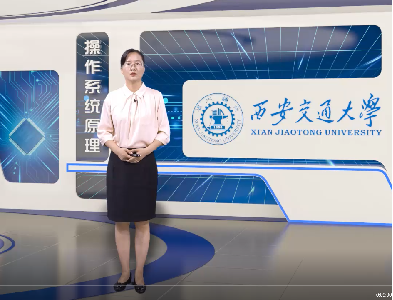
当前课程知识点:Production Engineering > Chapter 7 Water Injection > 7.4 Analysis and Application of Injectivity Index Curves > 7.4.1 Analysis of Injectivity Index Curves
返回《Production Engineering》慕课在线视频课程列表
返回《Production Engineering》慕课在线视频列表
同学们好
本节我们学习注水指示曲线的分析
对于生产井来说
我们用IPR曲线的改变
来分析地层供液能力的变化
而不同的示功图的形状
代表了有杆泵生产的工况分析
对于注水井来说注水指示曲线
是反映注水能力的变化
以及注水设备工况的
重要的分析手段
我们首先看一下
注水指示曲线的典型的形状
注水的指示曲线
代表了在测试的过程当中
注入压力跟注入量之间相对应的关系
首先 这种直线型的
各种不同的注水指示曲线
代表了什么样的一些工作状况呢
正常的注水指示曲线
是这种递增型的斜直线
它代表了注入压力和注入量之间
提高注量要提高注入压力
这样的一种情况
而不正常的这种递减型的指示曲线
表达的是注入量的增加
注入压力反倒下降了
是一种在现实中不正常的一种情况
或者是测试仪器出现了问题
而对于这种直线形是递增
但是是一种竖直线
它表示的是注入量没有变化
但是注入压力一直在提高
那么这种情况在现实中
有可能是注入的地层发生了一些影响
特别是地下的注入的管柱
发生堵塞的时候
有可能会出现这种不正常的指示曲线的情况
而对于折线的形式
我们有如下的两种典型的
折线型指示曲线
首先对于这种指示曲线来说
我们发现曲线的斜率发生了变化
我们知道 注水指示曲线的斜率
代表的是注水吸水指数的倒数
而这种斜率的降低
表达了吸水指数的增加
换句话说 就是它的吸水能力的增加
那么什么情况之下
会造成这种吸水能力的增加呢
首先 对于裂缝型的油藏
随着你的注入 注入压力提高之后
裂缝张开 会导致它的吸水能力增加
曲线变得向下折弯了
对于对于没有天然的裂缝
但是因为注入压力的提高
高于了破裂压力
使得地层压开了裂缝
使它的吸水能力也提高了
在这里面需要强调的
就是我们在注水的过程当中
注入压力的选择
一个基本的条件或者原则
就是注入压力不能高于破裂压力
高于破裂压力以后 产生了地层的裂缝
那么使我们的注水井
就有可能发生水窜的情况
也就是注入水随着裂缝流走了
没有达到注水的目的
另外的一种折线型 是使得注入过程中
它的吸水能力降低了
指示曲线向上弯曲了
产生这样的一种指示曲线
有下面的几个方面的原因
首先一个就是地层的问题
或者是仪器失灵
地层堵死了 使得注入压力提高
变成了一个向上弯曲的曲线
第二就是速敏的反应
第三是地层连通性变差 或者是没有连通
也就是注入水流到了一个不连通的区域
使得注入压力也提高了
以上我们介绍的指示曲线
是在测试的过程当中处理数据的时候
我们连接的指示曲线发生了一些变化
代表了地下发生的一些情况
而我们后面分析的
是油层吸水能力的变化
它表示的是前后两个时间段内
测量的指示曲线
它的一些变化代表了
地层发生的一些情况
首先一个 就是指示曲线右移
斜率变小的情况
也就是由这个曲线1到曲线2
那么这种情况表达的
就是地层的吸水能力增强了
吸水指数变大了 我们刚才说过了
指示曲线的斜率是吸水指数的倒数
相反的一种情况
就是指示曲线向左移
而且斜率变大的情况
相对应的它表示了
地层的吸水能力下降 吸水指数变小
那么对于指示曲线平移的情况
又是什么样的呢
如果指示曲线平行上移 代表了什么
我们知道指示曲线向下延伸
跟注入压力轴的交点
表达的是地层压力
指示曲线的平行上移 表示了
吸水能力没有变化
但是地层压力上升了
相对应地
如果指示曲线平行下移
表示的也是吸水能力没有发生变化
但是地层压力下降
除了能够分析地层的吸水能力的变化之外
我们通过吸水指示曲线
还可以分析井下配水工具的一些工作状况
比如对于这种下入封隔器的
分层注水的管柱
我们去测试它的注入压力
和注入量之间的关系的时候
我们可以分析封隔器失效的情况
我们来看如果第一级的封隔器失效
会发生什么样的一种状态呢
对于第一级的封隔器失效
使得这一部分的
油管和套管之间就连通了
那么这种连通导致了
油套压的平衡
就是油压套压变成同样的值了
同时注水量上升
也就意味着
第一级的封隔器失效之后
这个两个层位 高渗层吸水量增加
使得它的注水量增加了
也就是这两个层位
变成了笼统注水的方式了
如果第一级以下的封隔器失效
也就是第一级封隔器是工作正常的
但是以下的封隔器失效
那就意味着以下的各个层位
变成了笼统注水
那么表现出来的形式是什么呢
就是注入压力不变
就是油压不变 或者是油压略有下降
而套压保持不变 为什么套压不变
是因为第一级的封隔器
还是工作正常的
注水量的上升 表示以下的各个层位
变成了笼统注水 使得高渗层吸水量增加
注水量上升了
对于配水器失效的情况
我们同样可以通过
分析注水指示曲线的变化来获得
对于这种指示曲线上移
而且斜率增加的这种情况
表达的是注水的情况之下
它的水嘴堵塞
如果水嘴堵塞的情况就会出现
指示曲线上移
而且指示曲线的斜率
发生变大的这种情况
对于水嘴的孔眼刺大的情况
也就是它孔径变大的情况
这个时候它的指示曲线
会发生这种变化 下移
而且是指示曲线的斜率变小
同样 如果是水嘴掉落了
这个时候我们获得的指示曲线
也是比较类似的
下移 而且它的斜率变小
以上就是我们介绍通过注水指示曲线
获取井下的吸水能力的变化
以及注水工具的一些变化
这就是本节介绍的主要内容
同学们再见
-1.1 Main Tasks of Production Engineering
--1.1 Main Tasks of Production Engineering
-1.2 Flow in Production System
--1.2 Flow in Production System
-Problems
--Chapter 1 - Problems
-2.1 IPR Curve and Well Productivity
--2.1.1 Single-Phase Oil Inflow Performance Relationships
-2.2 Vogel's IPR and Applications
--2.2.2 Determination of IPR Curves Using Vogel's Equation
--2.2.3 Skin Factor and Flow Efficiency
--2.2.4 Extension of Vogel's Equation for Non-Complete Wells
--2.2.5 Combination Single-Phase Liquid and Two-Phase Flow
-Problems
--Chapter 2--Problems
-3.1 Two-Phase Flow in Wellbore
--3.1.1 Flow Regimes in Vertical Flow
-3.2 Two-Phase Vertical Flow Pressure Gradient Models
--3.2.1 Two-Phase Pressure Gradient Equations
--3.2.2 Predicting Gas-Liquid Flow Regimes Using the Okiszewski Correlation
--3.2.3 Pressure Gradient Calculation Using the Okiszewski Correlation
-3.3 Vertical Lift Performance
--3.3 Vertical Lift Performance
-Problems
--Chapter 3--Problems
-4.1 Nodal Analysis Approach
--4.1.2 Solution Node at Bottom of Well
--4.1.3 Solution Node at Wellhead
-4.2 Flow through Chokes
--4.2.2 Solution Node at Choke
-Problems
--Chapter 4--Problems
-5.1 Principles of Gas Lift
--5.1.2 Initial Kick-off of Gas Lift
-5.2 Gas Lift Valves and Gas Lift Completions
-5.3 Gas Lift Design
--5.3.1 Gas Lift Design for Specific Production Rate
--5.3.2 Gas Lift Design for Specific Injection Rate
--5.3.3 Kick-off Procedure with Unloading Valves
--5.3.4 Design Depths of Unloading Valves
-Problems
--Chapter 5--Problems
-6.1 Introduction of Surface and Downhole Equipment
-6.2 Operating Principle of Sucker Rod Pumps
-6.3 Pumping Unit Kinematics
--6.3.1 Motion of Polished Rod-Simple Harmonic Motion
--6.3.2 Motion of Polished Rod-Crank and Pitman Motion
-6.4 Polished Rod Load
--6.4.3 Peak Polished Rod Load and Minimum Polished Rod Load
-Problems
--Problems for chapter 6: Sucker Rod pumping I
-6.5 Calculation of Counterbalancing, Torque and Power
--6.5.1 Balance of Pumping Unit
--6.5.2 Counterbalancing Calculation
--6.5.3 Torque and Torque Factor
-6.6 Volumetric Efficiency of Pump
--6.6.2 Gas Effect on Pump Performance
--6.6.3 Measures of Enhancing Pump Volumetric Efficiency
-6.7 Design of Pumping System
--6.7.1 Strength Calculation and Design of Sucker Rod Strings
--6.7.2 Design Procedures of Pumping System
-6.8 Analysis of Sucker Rod Pumping Well Conditions
--6.8.1 Acoustic Surveys and Analysis of Annular Liquid Levels
--6.8.2 Introduction of Dynamometer Card
--6.8.3 Typical Dynamometer Cards
-Problems
--Problems: Chapter 6: Sucker Rod Pumping (II)
-7.1 Water Injection System
--7.1.1 Water Resources and Water Treatment
--7.1.2 Introduction of Water Injection System
-7.2 Injectivity Analysis
--7.2.1 Injectivity and Injectivity Index Curves
-7.3 Injection Tubing String
--7.3 Introduction of Injection Tubing Strings
-7.4 Analysis and Application of Injectivity Index Curves
--7.4.1 Analysis of Injectivity Index Curves
--7.4.2 Injection Choke Deployment
-Problems
--Chapter 7--Problems
-8.0 Introduction
-8.1 The Fracturing of Reservoir Rock
--8.1.1 Basic Rock Mechanics Parameters
--8.1.4 Fracture Initiation Conditions
-Problems
--Chapter 8(I)--Problems
-8.2 Fracturing Fluids
--8.2.2 Fluid-Loss Properties of Fracturing Fluids
--8.2.3 Rheological Properties of Fracturing Fluids
-8.3 Proppants
-8.4 Hydraulic Fracturing Design
--8.4.1 Productivity Index of Hydraulic Fracturing Wells
--8.4.2 Fracture Geometry Models
--8.4.3 Design Procedure for Hydraulic Fracturing
-Problems
--Chapter 8(II)--Problems
-9.0 Introduction
-9.1 Carbonate Acidizing
--9.1.1 Mechanism of Carbonate Acidizing
--9.1.2 Effect Factors of Reaction Rate
--9.1.4 Effective Distance of Live Acid
-9.2 Sandstone Acidizing
--9.2.1 Mechanism of Sandstone Acidizing
--9.2.2 Mud Acid Treatment Design
-9.3 Acidizing Treatment Technologies
--9.3.2 Acidizing Treatment Operations
-Problems
--Chapter 9--Problems
-Final Exam
